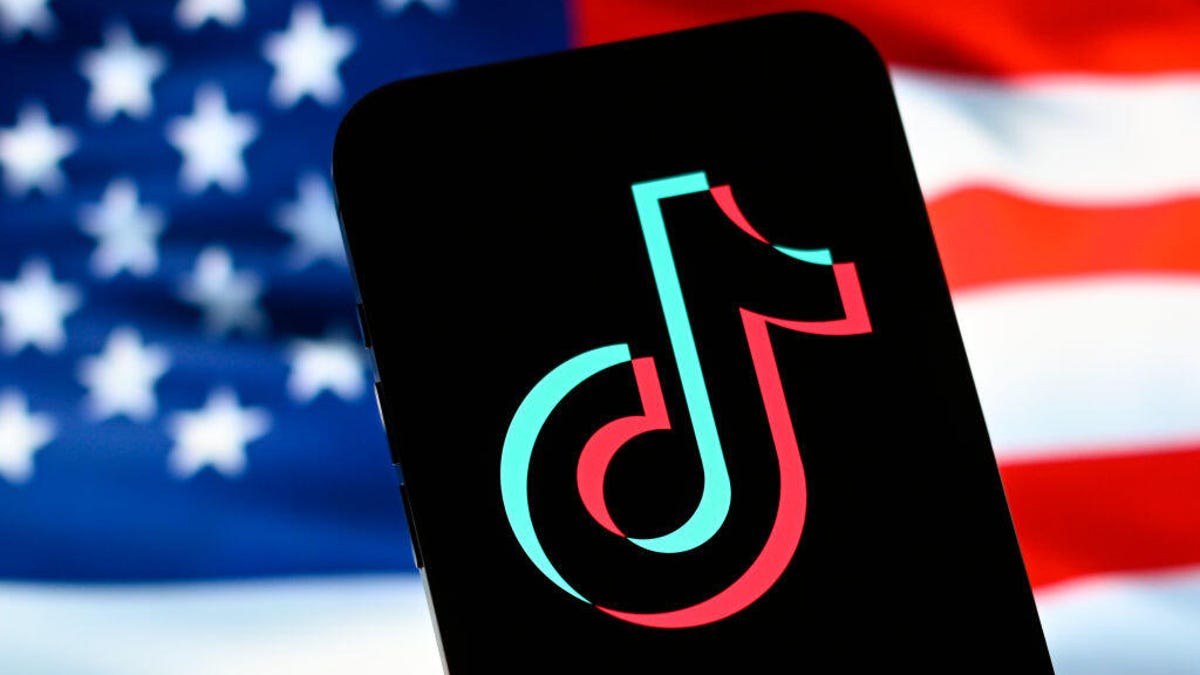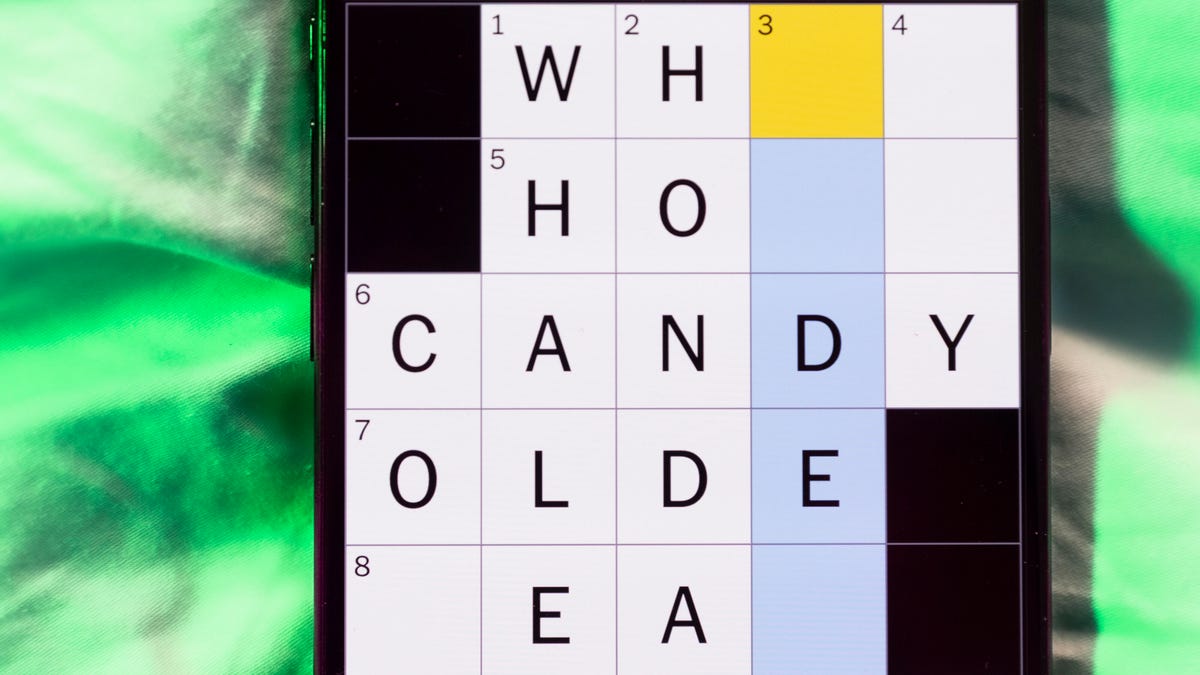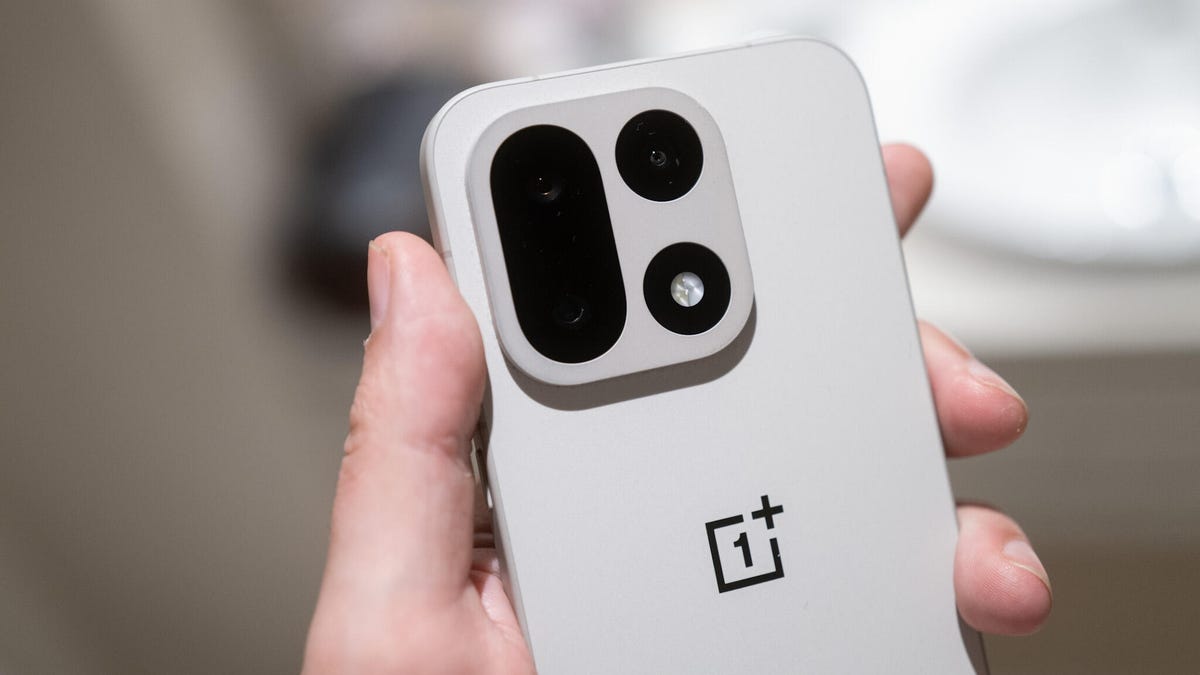Technologies
Trump Gives TikTok Another 75 Days to Strike a Sale
The president says he’s signing an executive order to push back enforcement of the ban again, pushing back the previous deadline of Saturday.

President Donald Trump is giving TikTok more time to sell its US operations, saying that «tremendous progress» has been made toward a deal and pushing off enforcement of a ban that was set to kick in Saturday.
In a Friday afternoon Truth Social post, Trump said that despite that progress, the deal still needs more work, so he’s signing an executive order giving TikTok 75 more days, taking the deadline out to June 19. The move prevents the wildly popular video app from potentially going dark in less than a day.
Trump went on to say that his administration will continue to work with China and credited the tariffs he enacted earlier this week, calling them «the most powerful economic tool» and «very important» to national security.
«We do not want TikTok to ‘go dark,'» Trump said in his post. «We look forward to working with TikTok and China to close the Deal.»
Both TikTok and the Chinese government have long opposed a sale of the company’s US operations and it remains unclear as to if their positions have changed. TikTok didn’t immediately return an email seeking comment.
Read more: TikTok Backups: 6 Similar Apps for Your Daily Dose of Fun
China on Friday reacted to the tariffs Trump spoke of by matching them with its own on US goods, escalating the trade war between the two countries and sending stock markets around the world tumbling. The Dow Jones Industrial Average plunged more than 2,200 points and the Nasdaq composite lost 5.8% in afternoon trading — its biggest drop in five years.
The TikTok ban delay wasn’t unexpected. Several potential bidders for TikTok’s US operations have made their interest known in just the past few days, and Trump has been meeting with administration officials this week to discuss possible deals and ownership structures.
According to recent reporting by The New York Times, one plan included private equity firm Blackstone and the tech company Oracle, while another involved a last-minute bid from Amazon.
Lawmakers in both political parties have long voiced concerns that TikTok could be a threat to national security and could be used by the Chinese government to spy on Americans or spread disinformation to further China’s agenda. TikTok continues to deny those accusations.
The law requiring the sale was passed by Congress last year with overwhelming bipartisan support and signed into law by then-President Joe Biden. Free speech and other groups sued to overturn the law on First Amendment grounds, but it was upheld by the US Supreme Court in January.
So what’s next for TikTok? Here’s what you need to know.
What does the law do?
The law aims to force TikTok’s China-based parent company, ByteDance, to sell to a buyer American officials are OK with and guarantee that ByteDance no longer has access to US user data or control over the TikTok algorithm.
TikTok was given nine months to comply, hence the original Jan. 19 sale deadline, at which point the government could require the removal of its app from US app stores and that other tech companies stop supporting the app and website.
TikTok shut down in the US the night of Jan. 18, citing the ban, but came back online the next morning after Trump made assurances that he would not immediately enforce it. Trump later formalized that promise by signing an executive order that directed the attorney general to not enforce the ban for 75 days, effectively moving the deadline to April 5.
The new executive order pushes the deadline back to June 19, which is Juneteenth, a federal holiday.
Read more: TikTok Loves to Give Financial Advice. But Don’t Believe Everything You Hear
What’s Trump’s take?
After originally calling for a ban during his first presidency, Trump said during the 2024 campaign that he wasn’t in favor of one and pledged to «save TikTok,» though he didn’t specify how he’d do that.
Trump told the press on Sunday that «there’s tremendous interest in TikTok.» He added that he would «like to see TikTok remain alive.» The president also said that «we have a lot of potential buyers» and that his administration is «dealing with China,» which has long opposed a sale.
On March 26, Trump said he would consider lowering tariffs on Chinese goods if that country’s government approved a sale of TikTok’s US operations. He also at that time reiterated his willingness to push the deadline back if needed.
Trump also has floated the idea of the US taking a 50% stake in the company as part of a joint venture, but hasn’t given specifics as to how that would work.
TikTok CEO Shou Chew was one of several high-profile tech executives to attend Trump’s inauguration in January, just hours before Trump would sign the order granting the 75-day extension.
Previous to that, during a press conference in December, Trump pointed to the role TikTok played during the election, crediting it with helping him pick up the votes of young people.
«TikTok had an impact, and so we’re taking a look at it,» Trump said. «I have a little bit of a warm spot in my heart. I’ll be honest.»
Technologies
Today’s NYT Mini Crossword Answers for Saturday, Nov. 22
Here are the answers for The New York Times Mini Crossword for Nov. 22.

Looking for the most recent Mini Crossword answer? Click here for today’s Mini Crossword hints, as well as our daily answers and hints for The New York Times Wordle, Strands, Connections and Connections: Sports Edition puzzles.
Need some help with today’s Mini Crossword? It’s a long one, since it’s Saturday, and some of them were tough today. (Two Bee clues?) Read on for the answers. And if you could use some hints and guidance for daily solving, check out our Mini Crossword tips.
If you’re looking for today’s Wordle, Connections, Connections: Sports Edition and Strands answers, you can visit CNET’s NYT puzzle hints page.
Read more: Tips and Tricks for Solving The New York Times Mini Crossword
Let’s get to those Mini Crossword clues and answers.
Mini across clues and answers
1A clue: Moves (over) in one’s seat
Answer: SCOOTS
7A clue: Capital of Taiwan
Answer: TAIPEI
8A clue: ___ Bee
Answer: SPELLING
10A clue: In the style of
Answer: ALA
11A clue: Device with a keypad that’s typed on discreetly, for short
Answer: ATM
12A clue: ___ Bee
Answer: SAMANTHA
15A clue: «Family Guy» baby
Answer: STEWIE
16A clue: Sings in the Alps
Answer: YODELS
Mini down clues and answers
1D clue: Like some clams and freshly cleaned shirts
Answer: STEAMED
2D clue: What an online meeting invite gets added to, for short
Answer: CAL
3D clue: Vinegar’s counterpart
Answer: OIL
4D clue: Morphine and codeine, for two
Answer: OPIATES
5D clue: First inning in extra innings
Answer: TENTH
6D clue: Greek «S»
Answer: SIGMA
8D clue: Full of back talk
Answer: SASSY
9D clue: «Allegory of the Cave» philosopher
Answer: PLATO
13D clue: Wonderstruck feeling
Answer: AWE
14D clue: Nothin’
Answer: NIL
Technologies
Today’s NYT Connections: Sports Edition Hints and Answers for Nov. 22, #425
Here are hints and the answers for the NYT Connections: Sports Edition puzzle for Nov. 22, No. 425.

Looking for the most recent regular Connections answers? Click here for today’s Connections hints, as well as our daily answers and hints for The New York Times Mini Crossword, Wordle and Strands puzzles.
Today’s Connections: Sports Edition is a diverse one today. As a Seattle resident, I got a kick out of the purple category. If you’re struggling with today’s puzzle but still want to solve it, read on for hints and the answers.
Connections: Sports Edition is published by The Athletic, the subscription-based sports journalism site owned by The Times. It doesn’t appear in the NYT Games app, but it does in The Athletic’s own app. Or you can play it for free online.
Read more: NYT Connections: Sports Edition Puzzle Comes Out of Beta
Hints for today’s Connections: Sports Edition groups
Here are four hints for the groupings in today’s Connections: Sports Edition puzzle, ranked from the easiest yellow group to the tough (and sometimes bizarre) purple group.
Yellow group hint: Gridiron numbers.
Green group hint: The Garden State.
Blue group hint: Guarding against scores.
Purple group hint: DC, or the Evergreen State.
Answers for today’s Connections: Sports Edition groups
Yellow group: Football defensive stats.
Green group: Teams that play in New Jersey
Blue group: US soccer goalkeepers.
Purple group: Washington ____.
Read more: Wordle Cheat Sheet: Here Are the Most Popular Letters Used in English Words
What are today’s Connections: Sports Edition answers?
The yellow words in today’s Connections
The theme is football defensive stats. The four answers are hurry, interception, sack and tackle.
The green words in today’s Connections
The theme is teams that play in New Jersey. The four answers are Devils, Giants, Gotham and Red Bulls.
The blue words in today’s Connections
The theme is US soccer goalkeepers. The four answers are Howard, Naeher, Scurry and Solo.
The purple words in today’s Connections
The theme is Washington ____. The four answers are Capitals, Huskies, Nationals and Spirit.
Technologies
The iPhone 17 Pro’s Cameras Take the Fight to the OnePlus 15, and There Are Bruises
Camera showdown: The OnePlus 15’s camera should have surprised me, but it really didn’t. Meanwhile, Apple’s iPhone 17 Pro keeps on delivering in terms of photography.

The OnePlus 15 impressed my excellent colleague, David Lumb, with its superb battery life and excellent performance, especially for gaming. I wasn’t as thrilled with the cameras in my early testing, but the proof of its photography prowess comes down to how it stacks up against the competition. In this case, the iPhone 17 Pro is one of our favorite phone cameras and indeed one of the best camera phones you can buy in 2025.
For years, OnePlus has partnered with the iconic Swedish camera maker Hasselblad to work on color science and image calibration for OnePlus phones. But that partnership has ended, which puts a lot of pressure on the Chinese company to impress with its camera suite on the OnePlus 15. Throughout all these changes, Apple released the iPhone 17 Pro, which has a brand-new 48-megapixel 4x telephoto camera and carries forward the company’s reputation for excellent photography.
I headed out to the streets of Edinburgh, Scotland, to test both phone cameras in a variety of situations. It’s important to note, though, that what I consider «better» might not be what you agree with. Photography, like all art, is subjective. While, as aprofessional photographer, I prefer more natural, true-to-life tones, you may prefer imagery with more pop and colors. Take my thoughts with a grain of salt.
Note, too, that all images were taken with each phone’s standard camera mode in JPEG format, and all images have been resized using Adobe Lightroom, with no additional edits or sharpening applied. Small print done with, let’s dive in.
Straight off the bat, I’ll admit a small mistake in the photos above. I took this shot using one of the iPhone’s Photographic Styles. I think it was Gold, and so it’s no surprise that it’s given the image a more vibrant, warmer look that suits the scene incredibly well. I only had the style active for this example and the ultrawide version below.
However, I noticed that the iPhone’s exposure is broadly better, while the OnePlus’ software processing had worked so hard in reducing image noise that a lot of the texture in the floor had been lost.
Switch to the ultrawide lenses, and things do change a bit. The iPhone’s exposure above looks preferable to my eye, but the OnePlus’ shot definitely has more detail overall.
This example above is quite classic of the problems I have not just with the OnePlus 15, but also with most of OnePlus’ phones. The image is quite heavily saturated, with an electric-blue sky and vivid greens that look unnatural to me. The iPhone’s image has a much better handle on color here.
My other problem with OnePlus’ phones is how hard they go with their HDR processing, brightening up shadows and pulling back highlights, resulting in images that quite often lack depth and believable contrast. The image above is a prime example where the deep shadows under this bridge have been maintained in the iPhone’s shot, but where the OnePlus 15 has tried to lighten them so much that the image looks very overprocessed.
And to prove it’s not a one-off, this example above is a real low point for the OnePlus. It really tried to eliminate any kind of shadows in this scene, while pulling back the highlights in the sky outside far too much. The image looks fake, overprocessed and exactly what people would think of if you told them a photo was taken on a phone. By taking a far more subtle approach, the iPhone’s image is much more to my liking.
The OnePlus hasn’t gone as hard with its vendetta against shadows in the image above, but it does look like it’s ramped that saturation way up. It’s not that I don’t like vibrant colors — I do — it’s just that I want to add in that saturation should I want to, rather than having it forced on me by default.
The images above show a more muted scene and a good effort from both phones. Although taken just nine seconds apart (I checked the metadata), I do think the sun may have slightly peeked out from behind a cloud a little more in the iPhone’s shot, as the front of the building does look quite a lot brighter. Or maybe the OnePlus is going hard on the HDR again. Who knows? Either way, good details on this image from both phones.
The same scene in ultrawide does arguably look a little muted from the iPhone, at least when compared with the bold blue of the OnePlus’ shot above. Somewhere between the two would be my sweet spot. After I zoomed in on the details, the iPhone’s shot is certainly clearer, but at full screen — or on your Insta feed — that difference is negligible.
That brightness and color difference persists when taking each phone to its maximum default telephoto zoom, so maybe it doesn’t have anything to do with the sun and clouds after all. Colors aside, the iPhone’s shot above is also clearer, and its details look sharp without being overly digitally sharpened. The OnePlus’ image does have something of a «crunchiness» to it from its software processing that I don’t like as much.
Peeping close up at the pixels on each phone’s telephoto zoom shot, I definitely think the OnePlus has gone too hard with its sharpening in the image above of a person in a window.
I’m slightly more torn on this nighttime scene. The OnePlus shot above has yet again gone big on the saturation. Look at the overcooked green on the grass — it looks like it was taken at midday in the spring. The iPhone’s colors look way more natural. However, the OnePlus’ sharpening works in favor at night, delivering a shot with crisper details throughout.
And in ultrawide, I flat out prefer the OnePlus image above. Those vibrant tones look much better here, especially as they make the oranges of the building in the background stand out more.
And if we peep at those pixels again, it’s clear that the details on the OnePlus’ shot (left) are far better. Finally, a win for the OnePlus.
This final indoor low-light scene is a bit more of a mixed bag. The OnePlus’ image above is unquestionably brighter — especially the people nearest the camera — but its noise reduction has gone a bit too hard in some areas, reducing textures on clothing and hair that the iPhone hasn’t done. Overall, though, I’d say this example is a close fight.
iPhone 17 Pro vs. OnePlus 15: Which camera is better?
For me, it’s an easy victory for the iPhone 17 Pro. Almost across the board, its images are more natural looking with realistic colors, saturation levels and exposure. The OnePlus 15’s reliance on heavy-handed image processing has resulted in often garish-looking photos that are almost the opposite of what I look for in my photography. However, as I said at the beginning, that’s just my opinion.
As a photographer, I want my camera — any camera — to be able to capture the best-looking image straight out of the camera that I can then apply more edits to if I want to. But maybe you don’t want to do that and instead want a vibrant, punchy-looking shot that you can immediately share to social media. If so, maybe the OnePlus will be fine for you.
At the end of the day, deciding which phone to buy will come down to more than just the camera, so make sure to read CNET’s in-depth reviews of all of 2025’s best phones to decide which is the one for you.
-

 Technologies3 года ago
Technologies3 года agoTech Companies Need to Be Held Accountable for Security, Experts Say
-

 Technologies3 года ago
Technologies3 года agoBest Handheld Game Console in 2023
-

 Technologies3 года ago
Technologies3 года agoTighten Up Your VR Game With the Best Head Straps for Quest 2
-

 Technologies4 года ago
Technologies4 года agoBlack Friday 2021: The best deals on TVs, headphones, kitchenware, and more
-

 Technologies4 года ago
Technologies4 года agoVerum, Wickr and Threema: next generation secured messengers
-

 Technologies4 года ago
Technologies4 года agoGoogle to require vaccinations as Silicon Valley rethinks return-to-office policies
-

 Technologies4 года ago
Technologies4 года agoOlivia Harlan Dekker for Verum Messenger
-

 Technologies4 года ago
Technologies4 года agoiPhone 13 event: How to watch Apple’s big announcement tomorrow
